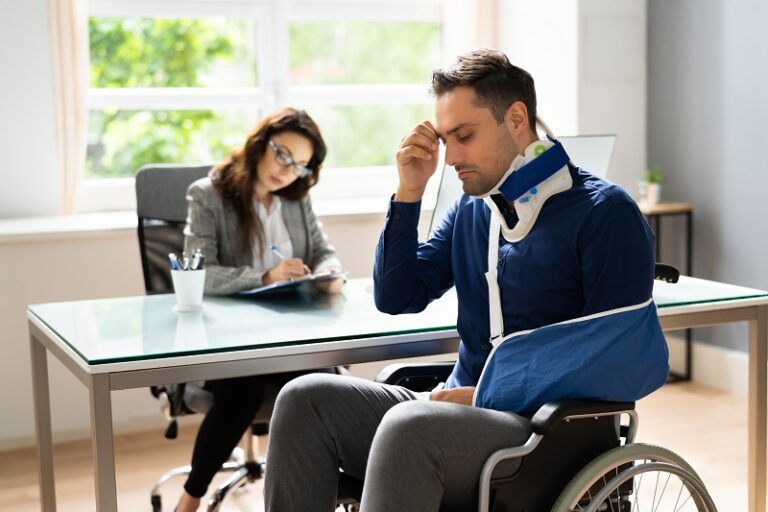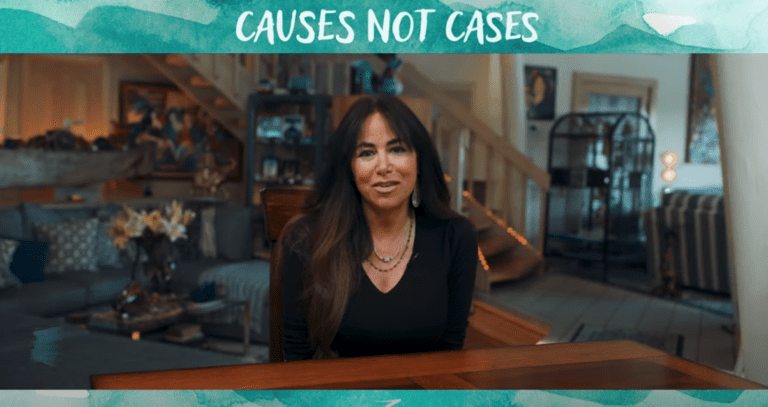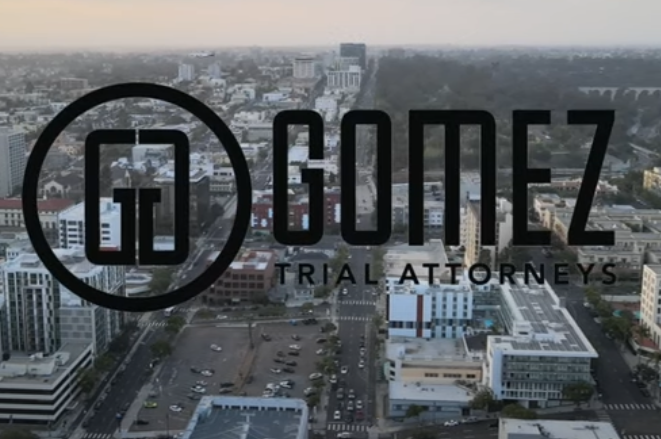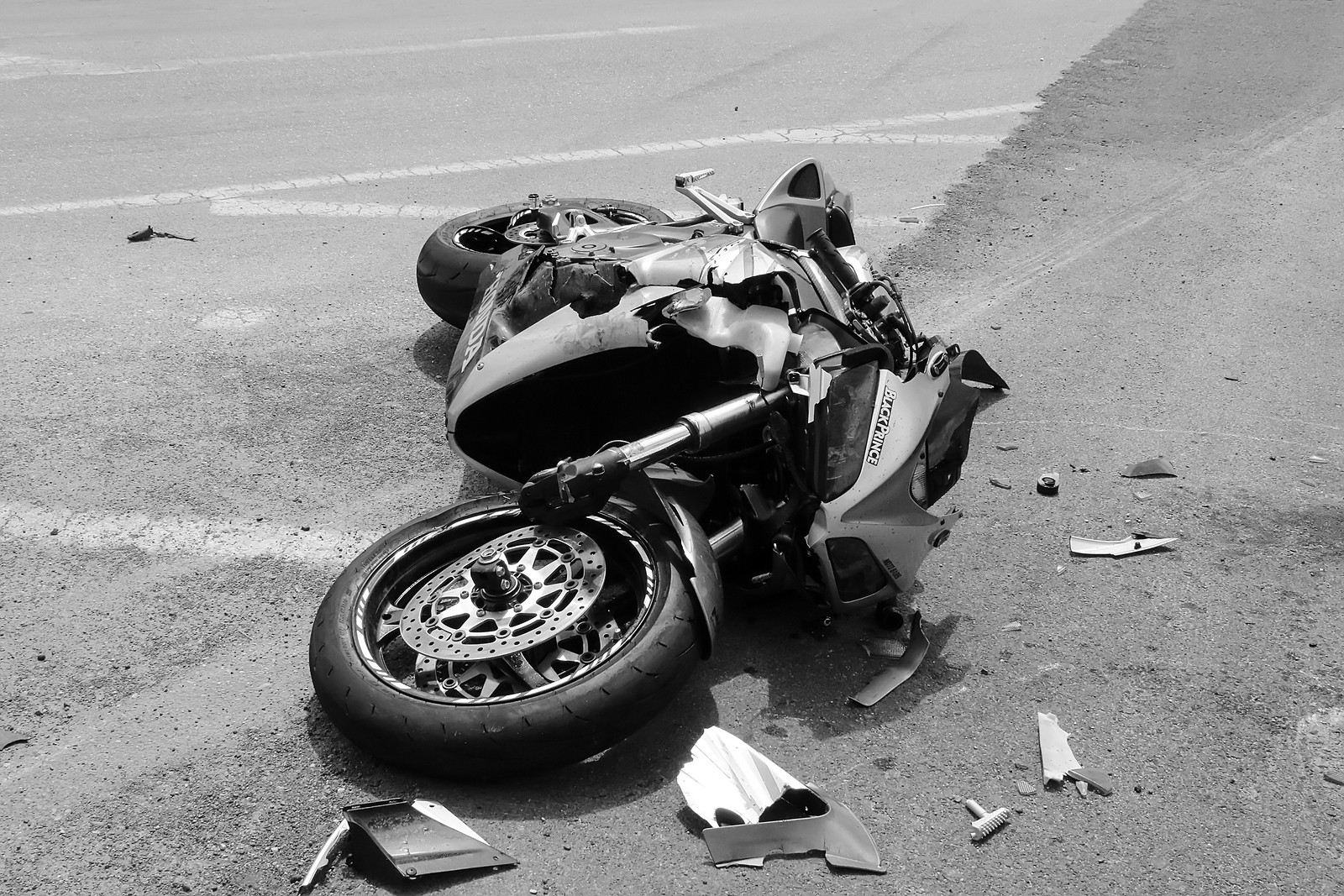 Of course, there are lots of great reasons to ride a motorcycle. Riders enjoy the feel of the open road, the sense of adventure, and a connection to the journey of traveling from one place to another. The feeling of freedom offered by riding a motorcycle simply cannot be achieved from the confines of a vehicle enclosed in a steel frame.
Of course, there are lots of great reasons to ride a motorcycle. Riders enjoy the feel of the open road, the sense of adventure, and a connection to the journey of traveling from one place to another. The feeling of freedom offered by riding a motorcycle simply cannot be achieved from the confines of a vehicle enclosed in a steel frame.
However, despite all of the wonder that riding a motorcycle provides, there are inherent risks and vulnerability in riding a two-wheeled vehicle on roadways filled with four-wheeled cars and trucks. The lack of a steel frame and other protective features, such as seat belts or airbags, creates increased risks of serious injury and fatality among motorcyclists in the event of an accident.
According to the National Highway Traffic Safety Administration (NHTSA), around 5,000 people die each year in motorcycle accidents. Motorcycle riders and passengers account for the vast majority of motorcycle accident fatalities. Fortunately, the number of fatalities caused by motorcycle accidents has slightly decreased in recent years.
However, statistics show that riders are twenty-eight times more likely to die in a traffic-related crash than the occupants of any other vehicle type. The Insurance Information Institute reports that over 85,000 people are injured in motorcycle accidents in the United States each year, accounting for more than 1,000 injuries per 100,000 registered motorcycles.
Human error causes the majority of traffic-related crashes. As explained below, in addition to human error, a few factors commonly contribute to accidents that are out of motorists’ control. For example, inclement weather and poor road conditions often lead to motor vehicle accidents. If you were injured in a motorcycle accident that was caused by another’s careless or reckless actions, contact a motorcycle accident lawyer for a free case evaluation.
[lwptoc]
Left Turns
According to RideApart, the most common type of motorcycle accident involves a car making a left turn into the path of the motorcycle, typically in an intersection. After causing a left-turn accident, drivers often report that they simply can’t see the approaching motorcycle. By design, motorcycles are smaller in size and have a lower profile than other vehicles, making them difficult to spot in traffic.
Additionally, studies indicate that while drivers look for other vehicles, they most often look for cars and trucks, not motorcycles. As a result, drivers frequently fail to completely and thoroughly check for motorcycles before crossing into an oncoming lane of traffic while turning left.
This phenomenon, known to researchers as “inattentional blindness,” relates to how the brain processes the large amount of information required by the task of driving. In studying inattentional blindness, researchers asked a group of people to examine a series of photographs depicting routine driving situations from a driver’s perspective. After examining the photos, researchers asked individuals to determine whether the image represented a safe or unsafe driving environment.
For the final photograph, researchers manipulated the image to add an unexpected object—either a motorcycle or a taxi—and asked the participants if they noticed either object.
Forty-eight percent of the participants did not recognize the additional object in the final photograph, and they were significantly less likely to detect the motorcycle. Thirty-one percent could not recognize the taxi, while sixty-five percent did not recognize the motorcycle. Because participants stated they believed a motorcycle was just as likely to be on the road as a taxi, researchers concluded that the brain prioritizes the information it processes. The study shows that the brain unconsciously places a lower priority on processing the presence of a motorcycle than it places on other vehicles.
Another scenario commonly leading to a left-turn motorcycle accident involves a motorcyclist running a yellow light as a driver is making a left turn.
While yellow traffic lights can be confusing for most drivers, the general rules for approaching a yellow light are:
- If you can stop on yellow, you should do so.
- If you are too close to the intersection to stop when the light is yellow, travel through it.
The problem is, that the approaching motorcyclist does not want to wait through the red light, so he or she speeds up to clear the intersection before the light changes. Meanwhile, the left-turning driver also does not want to sit through another light, so he or she attempts to get through the intersection while the light yellow as well. When both the motorcyclist and the driver assume the other will stop, creating an opportunity to beat the yellow light, the risks of an accident significantly increase.
RideApart encourages motorcyclists to use extreme caution when approaching intersections to avoid left-turn collisions. By observing the wheels of a vehicle waiting to complete a left turn, motorcyclists may identify the first indication that the vehicle is going to attempt a left turn. If the vehicle is moving towards the turning lane, it should be obvious to motorcyclists that the vehicle will turn across their lane of travel.
For riders, it is always best to assume that another driver turning through an intersection may not see them. Slow down as much as possible at intersections and have a plan for evasive action to avoid another’s actions that may lead to an accident.
Unsafe Lane Changes
All motor vehicles have a blind spot, an area—generally on the rear or sides of a vehicle—where the driver cannot observe approaching vehicles through the vehicle’s side and rear view mirrors. While most drivers are aware their vehicles have blind spots, drivers must look over their shoulders to ensure that an adjacent lane of travel is completely clear.
Drivers may be accustomed to clearing their blindspots for larger vehicles, and may miss motorcyclists traveling in an adjacent lane. Further, the size of the vehicle directly relates to the extent of its blind spots.
Commercial trucks, for example, have significant blind spots on all four sides of the vehicle, and blind spots create a greater imposition for pickup trucks and SUVs as well. RideApart recommends that riders acknowledge motor vehicles’ blind spots and avoid lingering in those areas when traveling in the same direction as vehicles in adjacent lanes.
Blind spots create dangerous situations for motorcyclists when drivers who are attempting to change lanes cannot see an approaching motorcycle. Many lane-change accidents occur when drivers carelessly change lanes without using a turn signal or thoroughly checking their mirrors and blind spots for other motorists. Other times, drivers impaired by alcohol, drugs, or other distractions may unintentionally veer into an adjacent lane of travel.
Similar to left turns at intersections, riders should cautiously look for indications that a nearby vehicle may, intentionally or unintentionally, change lanes. For example, riders should watch for turn signals, vehicle’s wheels, or a driver’s head looking toward an open lane. Extra precaution must be taken in highly trafficked or congested areas, particularly when riding with traffic that is moving faster than the traffic in an adjacent lane.
Evasive Maneuvers
While motorcycle accidents most commonly involve at least one other vehicle, and approximately one-quarter are single-vehicle motorcycle accidents, or no-contact motorcycle accidents. Many single-vehicle motorcycle accidents are caused by the motorcyclist attempting to avoid the careless or reckless actions of another driver.
Some scenarios that may lead to a no-contact motorcycle accident include:
- A driver runs a red light or turns left into the path of a motorcycle causing a motorcyclist to lay down his or her bike in the process of trying to avoid being struck by the oncoming car.
- An occupant of a parked vehicle opens his or her door into the path of an oncoming motorcycle, causing the rider to swerve to avoid the door. Riders may lose control of their bike and crash into a roadside object, such as a curb, median, or parked vehicle.
- A driver attempts to make a lane change and fails to see the motorcycle in the adjacent lane. If the motorcyclist notices the vehicle moving over into his or her lane, they may swerve to avoid the collision causing a single-vehicle accident.
Speeding
The NHTSA reports that in thirty-two percent of fatal motorcycle accidents, the motorcyclist is speeding at the time of impact. Additionally, many motorcyclists are injured or killed when the drivers of other vehicles are speeding, as well. Speeding is not only driving above the posted limit, but also driving too fast for the conditions of the roadway.
Operating a motor vehicle at excessive speed is dangerous because:
- Speeding reduces the amount of time a driver or rider has to react after perceiving a hazard in the roadway ahead of them making an accident less avoidable.
- Speeding increases the amount of distance required to safely stop a motor vehicle. The heavier the vehicle and the faster it is moving, the longer the stopping distance.
- Speeding increases the force of a collision, resulting in more severe injuries and a higher risk of death.
- Speeding reduces the time the motorcyclist has to properly check for vehicles in their proximity, decreasing their ability to be aware of dangers and prepare to take evasive action.
- Speeding reduces riders’ ability to control and maneuver their bike, increasing the likelihood of an accident and reducing the effectiveness of the rider’s evasive action.
- Speeding reduces riders’ ability to accurately gauge the distance provided by a gap in traffic. When turning, riders must accurately estimate how fast an approaching car is traveling to identify whether they have enough time to safely cross through an intersection.
Impairment
Nearly half of all motorcycle accidents involve either alcohol impairment of the rider or the other driver. Drinking and driving is among the most common causes of all types of traffic collisions, contributing to approximately thirty fatalities per day in the United States. Consuming alcohol before operating a motor vehicle is particularly dangerous because alcohol impairment reduces the functioning of the skills required for safe driving and riding.
Contrary to popular belief, impairment doesn’t begin when a person’s blood alcohol concentration reaches the legal driving limit of 0.08 blood-alcohol content (BAC). Instead, the effects of alcohol impairment begin after a single drink, becoming more pronounced over time and with further consumption.
Some ways in which alcohol impairment can adversely impact a person’s ability to ride or drive safe include:
- The ability to rapidly track a moving target, which is necessary for tracking other vehicles.
- The ability to perform multiple tasks simultaneously.
- The ability to effectively steer the vehicle due to reduced coordination skills.
- The ability to respond adequately to emergencies on the roadway.
- The ability to concentrate and focus on the task of safe driving.
- The ability to control one’s speed and to maintain a single lane of travel.
- The ability to process information such as a blinking turn signal, a light change indicating the need to proceed or stop, or whether there is an adequate gap in traffic.
- The ability to brake effectively and appropriately.
The societal costs of drunk driving accidents are nearly $44 billion a year, including costs associated with lost productivity, workplace losses, legal and court expenses, medical costs, emergency medical expenses, insurance administration, traffic congestion, and property damage.
Of course, alcohol isn’t the only intoxicating substance that can increase the likelihood of a motorcycle accident. Drugs—including illicit drugs, prescription, and over-the-counter medications—can also impact a person’s ability to drive safely. The NHTSA performed a national survey revealing that approximately 20 percent of drivers on weekend nights were driving while impaired by drugs other than alcohol.
Some ways that drugs can impact a person’s ability to drive or ride safely include:
- Slowed coordination, judgment, and reaction times as the result of driving while impaired by marijuana and other drugs. A study showed that marijuana also affects a driver’s ability to multitask, which can interfere with vehicle operation.
- Aggressive and reckless driving, which is often experienced by those who are impaired by cocaine or methamphetamines.
- Extreme drowsiness caused by over-the-counter and prescription medications used to treat insomnia, colds, allergies, and other medical conditions.
Distracted Drivers
Distraction is another major cause contributing to all types of motor vehicle collisions, including motorcycle accidents. Nearly eight people die per day in a traffic-related crash involving a distracted driver. Each year, distracted-driving collisions account for 276,000 injured victims.
Broadly, there are three types of distractions:
- Manual distractions, which involve anything that takes the driver’s hands from the wheel. Common manual distractions include eating or drinking, reaching for something in the back seat or on the floor, or using a cell phone.
- Visual distractions, which include anything that draws the driver’s eyes from scanning the roadway. Some examples of visual distractions include external objects, such as billboards or roadside accident scenes, as well as, internal distractions such as vehicle occupants, including children or pets.
- Cognitive distractions, which involve anything that takes the driver’s mind from the task of safe driving. Examples of cognitive distractions include visiting with a passenger, daydreaming, arguing on the phone, or singing along with the radio.
Texting while driving is particularly dangerous, as it involves all three distractions. According to the NHTSA, it takes approximately five seconds to read or reply to a text while driving. During those five seconds, when traveling at highway speeds, a driver will have traveled the length of a football field. All the while, their hands are off the wheel, their mind is off the task of safe driving, and their eyes are not observing the road.
As explained, motorcyclists are already at a disadvantage due to inattentional blindness caused by the relatively low priority that a driver’s brain places on identifying and responding to a nearby motorcycle while driving.
When driver distractions are added to the mix, the likelihood of the following types of accidents is increased:
- Left-turn and other failure to yield accidents. Distracted drivers often fail to look before turning, and distraction is also a major contributor to red light-running.
- Rear-end accidents. Distracted drivers often follow too closely and fail to recognize that the motorcyclist has slowed or stopped ahead, which causes accidents.
- Lane changes. Distractions can cause a driver to veer into an adjacent travel lane occupied by a motorcycle or may lead to drivers changing lanes without signaling or thoroughly checking their mirrors or blind spots.
Tight Curves
Winding roadways are among the most enjoyable environments for a motorcycle ride. However, they are also among the most dangerous roadways. Tight roadway curves can be difficult for all motorists to maneuver, but particularly for motorcyclists.
Motorcycle accidents that involve navigating tight curves may be caused by:
- A driver speeding around a curve. When the curve tightens, drivers often drift into the opposing lane of travel, increasing the risk of a head-on collision with a motorcyclist or other vehicle.
- A motorcyclist may speed around a curve and encounter a vehicle while trying to maintain control of their bike.
- A motorcyclist hitting gravel while negotiating a curve may lose control of their bike, leading to an accident.
RideApart suggests that motorcyclists use visual cues like signs and telephone poles alerting motorists to upcoming curves, especially while riding unfamiliar roads. Riders should not travel at a speed that makes roadway signs less visible—a sign may be the only indication that a road turns along a blind crest. If you are unfamiliar with the roadway, your speed should be reduced so that your reaction time and ability to take evasive action are increased.
Of course, paying attention to signage and indicators of curves along the roadway will not prevent accidents caused by another driver speeding around a blind corner. However, it can prevent a motorcyclist from contributing to an accident and help them to avoid dangerous situations such as traveling too fast over loose gravel or other debris on the roadway.
Dooring
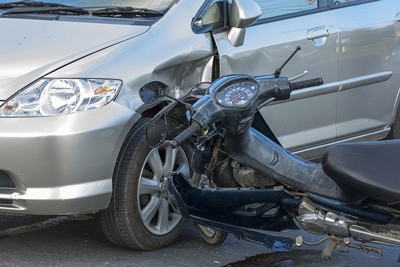 Dooring accidents occur when the occupant of a parked car opens the vehicle’s door into the roadway, directly into the path of an oncoming motorcycle.
Dooring accidents occur when the occupant of a parked car opens the vehicle’s door into the roadway, directly into the path of an oncoming motorcycle.
Dooring situations present an increased risk of three scenarios:
- The motorcycle collides with the door;
- The motorcyclist swerves to avoid the door and loses control of his or her bike; or
- The motorcyclist swerves to avoid the door and collides with another vehicle or object.
Motorcyclists often refer to the area between a stationary lane of active traffic and a line of parked cars as the Death Zone, because of the increased potential of being doored within that area and the high possibility that a pedestrian might step out into the roadway. RideApart recommends that riders avoid this area when possible to avoid accidents.
Many motorcycle advocates note that vehicle occupants bear a great responsibility in avoiding dooring accidents. One method for avoiding a dooring collision is the Dutch Reach, which some driving schools across the world are teaching all new drivers.
To perform the Dutch Reach:
- Drivers and passengers use the hand farthest away from the door to open the door by reaching across their body for the door handle.
- Because this motion forces their body to swivel, the driver is then positioned to look out of the window toward the rear of the vehicle, which makes motorcycles, bicycles, and other traffic more visible.
- After ensuring the path is clear, the vehicle occupant should then open the door slowly and exit the vehicle while continuing to look for potential hazards.
Tailgating
Tailgating drivers create another risk for motorcyclists. Tailgating occurs when a driver fails to put enough space between his or her vehicle and the vehicle they are following. Following too closely is a risky driving practice, as the rear driver does not have enough space or time to safely come to a stop if the lead vehicle suddenly slows down or stops.
Tailgating is often associated with aggressive driving. Aggressive driving, also known as road rage, often involves the behaviors exhibited by impatient drivers attempting to get around slower congested traffic. However, there are many other reasons a driver might tailgate a motorcyclist, including inattentional blindness.
While the front of the motorcycle that most commonly collides with another vehicle in the event of an accident, rear-end motorcycle accidents are particularly dangerous. Rear-end accidents can cause extensive damage and serious injury, even when a collision occurs at low speeds.
Rear-end motorcycle accidents are risky because:
- While motorcyclists are usually aware they are being tailgated, their view is blocked by the vehicle that is following too closely, making it difficult for them to react accordingly. In other words, because the accidents are caused by a vehicle that is behind the rider, they cannot successfully attempt evasive maneuvers.
- The impact to the back of the motorcycle will oftentimes propel the rider up into the air before forcing his or her body forward. The lifting and forward motions create a farther distance for the motorcyclist to fall, increasing the likelihood of severe injuries.
To avoid rear-end accidents, motorcyclists use two rearview mirrors to increase their visibility of other drivers’ behavior behind them. Additionally, because inattentional blindness frequently contributes to rear-end motorcycle crashes, riders must make themselves as noticeable to other roadway users as possible. Equipping your bike with louder tailpipes and brighter tail and brake lights and wearing brightly colored helmets or riding gear can increase your visibility to other drivers.
Inexperience
Accidents caused by riders who are not properly trained when licensed to ride a motorcycle account for nearly one-third of all motorcycle accident fatalities in the United States. While obtaining a special license or endorsement to ride is a requirement in most states, there is an even more important reason for obtaining one. Typically, to obtain a license or endorsement, a motorcyclist must complete training to master the skills needed to safely operate a motorcycle. Additionally, motorcyclists are often required to pass a performance test, demonstrating they possess the requisite skills.
Despite participating in training and executing performance tests, many licensed riders still lack the skills necessary for navigating the inevitable hazards they will encounter on the roadways. Oftentimes, inexperienced riders attempt to ride powerful bikes that are suited for much higher experience levels.
Over a ten-year period, the NHTSA noted a nine percent decrease in the number of fatal accidents involving motorcycles with less powerful engines (under 1,000 cc). However, during that same period, fatal accidents, involving motorcycles with more powerful engines (1,000 cc rating or higher), increased by nearly 104 percent.
The risks associated with inexperience may be increased when new riders attempt to keep up with a more- experienced crew of rider-friends. When in familiar company, inexperienced riders may be tempted to take more risks or ride longer or less carefully than they would otherwise. Inexperienced motorcyclists that wish to ride with others are encouraged to choose individuals with relatively the same skill level.
Road Defects
Motorcycles are less stable than passenger vehicles, simply due to the two-wheeled design. As a result, defects in the road, such as potholes, pose a higher risk of causing motorcycle accidents than other motor vehicle accidents. Other roadway conditions that are dangerous to motorcyclists include complex intersections, improperly designed curves or slopes, or an obstructed view caused by vegetation.
Lane Splitting
In California, it is not illegal for a motorcycle to pass other vehicles that are traveling in the same direction in the same lane. The practice is commonly referred to as lane splitting, and it enables motorcyclists to bypass traffic congestion. Lane-splitting is permitted to prevent riders from having to constantly accommodate the weight of their bike in stop-and-go traffic. While the activity is not illegal, it does pose hazards; for example, a driver may attempt to change lanes without ever realizing the motorcyclist is there.
Inclement Weather
Inclement weather does not provide the best conditions for riding a motorcycle, but sometimes riding through an unexpected storm is a rider’s only option. However, operating a motorcycle in wet weather, even a slight drizzle, can significantly increase the risks of an accident.
For example, wet conditions may create:
- Slippery road surfaces, particularly in intersections that accumulate oil and other lubricants, as they are highly-trafficked areas.
- Poor visibility, making it harder for motorcyclists to notice roadway hazards and also making it difficult for other drivers to see motorcyclists.
- An added distraction, as riders attempt to navigate around puddles and potholes with poor visibility while trying to maintain balance in windy conditions.
And, yet another danger posed by wet or slippery road surfaces is the increased distance required to safely come to a stop in such conditions. If you must ride during a rainstorm, be sure to allow extra space between yourself and others, and try to allow tailgating vehicles to pass.
Were You Injured in a Motorcycle Accident?
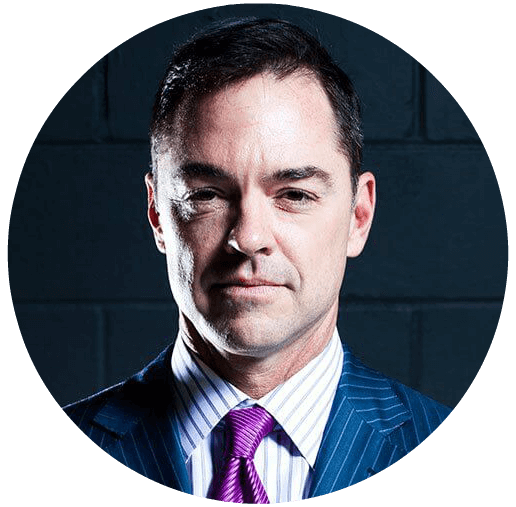
If you have been injured in a motorcycle accident caused by another’s careless or reckless actions, you may be entitled to seek compensation for any accident-related damages or injuries. A motorcycle accident claim is filed in civil court and the law requires accident victims to prove another’s liability for the accident and demonstrate the damages they incurred as a result.
Injured motorcycle accident victims may recover compensation for the following losses:
- Medical expenses;
- Lost wages;
- Loss of future earning capacity;
- Costs of repairing or replacing a motorcycle;
- Physical pain and suffering;
- Emotional distress; and
- Other economic and non-economic damages.
An experienced motorcycle accident attorney can help you to understand your legal options so that you may choose the best way to proceed. Contact a motorcycle accident today for a free case evaluation.
Gomez Trial Attorneys
655 West Broadway, Suite 1700
San Diego, Ca 92101
619-237-3490


